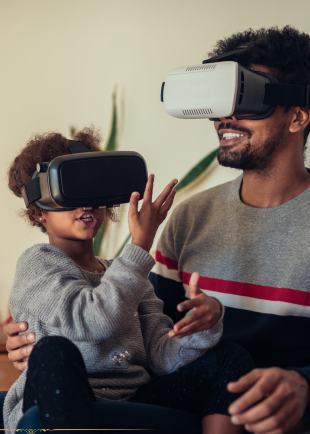Explore how Virtual Reality (VR) and Augmented Reality (AR) are revolutionizing corporate training and skill development with immersive, interactive, and scalable solutions.
Traditional training methods—manuals, lectures, and static e-learning—are being redefined by immersive technologies. Virtual Reality (VR) and Augmented Reality (AR) are now at the forefront of modern training and development programs, offering hands-on, engaging, and deeply interactive experiences that lead to faster learning and better retention.
As industries evolve, so must the way we train our workforce. Here's how VR and AR are transforming training into an immersive, effective, and future-ready experience.
Creating Realistic, Risk-Free Environments
VR enables employees to experience real-life work scenarios in a completely virtual, risk-free environment. Whether it’s a surgeon practicing a complex procedure or a factory worker learning how to handle dangerous machinery, VR simulations provide hands-on practice without exposing learners to actual hazards. This is especially valuable in industries like healthcare, aviation, construction, and manufacturing, where mistakes in the real world can be costly or life-threatening.
Increasing Engagement and Knowledge Retention
AR and VR experiences are far more interactive than traditional training methods. Studies show that immersive learning significantly improves focus, participation, and memory recall. When learners are actively involved—navigating 3D environments, solving real-time challenges, or interacting with virtual objects—they’re more likely to remember the training content and apply it effectively on the job.
Enabling On-Demand and Scalable Training
With VR and AR, training can be delivered anytime, anywhere. New employees can undergo orientation through a VR headset without needing an in-person trainer. Field technicians can use AR glasses to receive step-by-step instructions while working, reducing the need for supervision. This flexibility allows companies to scale training across global teams, ensuring consistency and saving costs related to travel, venues, and printed materials.
Personalized Learning Paths and Real-Time Feedback
Immersive technologies can adapt to each learner’s pace and skill level. VR-based platforms can track user performance, analyze behavior, and offer instant feedback or corrective instructions. This personalized approach allows trainees to improve at their own pace and gives managers actionable insights to identify strengths and areas that need further development.
Supporting Soft Skills and Leadership Development
It’s not just technical training that benefits from VR and AR. These tools are also being used to simulate customer interactions, conflict resolution, sales pitches, and leadership challenges. Learners can practice communication, negotiation, or empathy-building skills in a controlled environment and receive feedback on their responses. Such immersive experiences enhance emotional intelligence and prepare employees for real-world situations that require human connection and decision-making.
The integration of AR and VR into training and development is revolutionizing the way organizations prepare their workforce. These technologies make learning more engaging, effective, and accessible—delivering real-world skills without real-world risks. As businesses seek to stay competitive and future-ready, investing in immersive training tools is not just innovative—it's essential.











